2232Views 22Comments
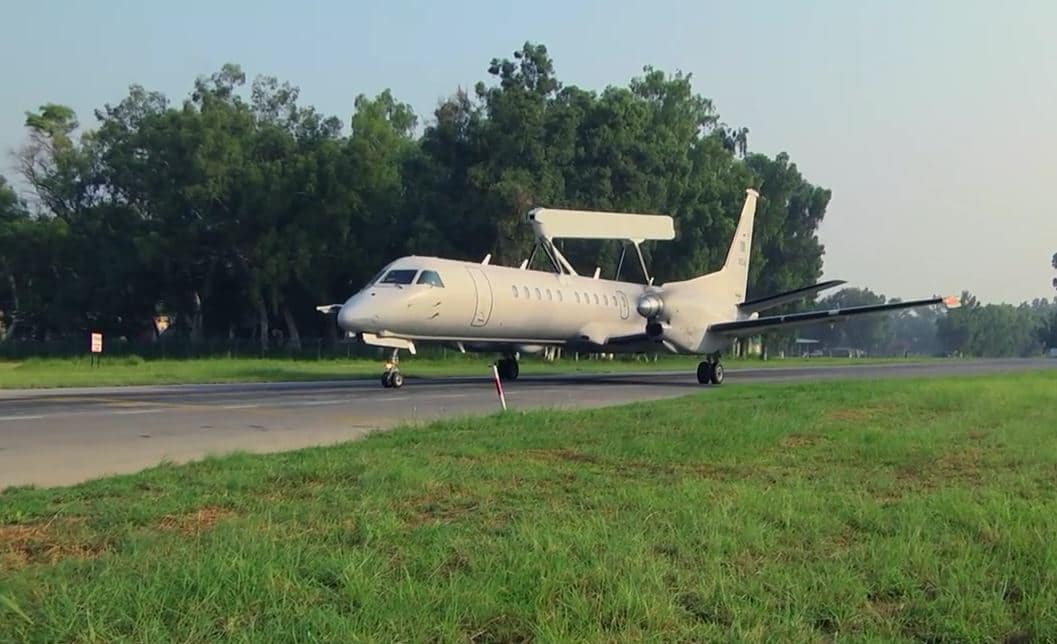
Pakistan Air Force officials outline Erieye AEW&C recovery process
In an interview with the state-owned television broadcaster PTV, several of the Pakistan Air Force’s (PAF) leading engineering officers outlined the process the PAF undertook to repair two damaged Saab 2000-based Erieye airborne early warning and control (AEW&C) aircraft.
The interview included Air Commodore Rizwan Riaz (a PhD in Aerodynamics and specializes in structural repair and certification), Air Commodore Shakeel Safdar (a PhD in Structural Design and Repair) and Wing Commander Muhammad Rafiq, who presided the implementation of the Erieye AEW&C repair program.
Pakistan ordered four Erieye AEW&C from the Swedish defence giant Saab in 2006. It had intended to acquire six, but some program funding had to be diverted to support recovery and reconstruction efforts in Kashmir following the 2005 Kashmir Earthquake, resulting in the order being trimmed to four. These were complemented by four China Electronics Technology Group Corporation ZDK03, which were locally designated “Karakorum Eagle.”
In August 2012, nine Tehreek-e-Taliban Pakistan (TTP) assailants had infiltrated and attacked PAF Minhas in Kamra with the apparent aim of attacking the Erieye AEW&C. The result of the attack left one Erieye as a complete write-off and two others damaged. The fourth Erieye AEW&C was not present at the base. In effect, the attack had left the PAF with only one of its four originally ordered Erieye AEW&C aircraft.
The PAF – along with Pakistan Aeronautical Complex (PAC) – took the lead in trying to resurrect the two damaged Erieye AEW&C. It succeeded in recovering the two aircraft, with the first returning in 2015 and the second in 2016. In October 2016, the Chairman of the Senate Standing Committee on Defence lauded PAC for its role in the recovery process. In May 2017, the PAF told Air Forces Monthly that it ordered three additional Erieye AEW&C from Saab, with the first due in December 2017.
The Pakistan Ministry of Defence Production’s (MoDP) yearbook for 2015-2016 registered the “recovery” of a “fourth AEW&C system” at a cost of $130.39 million U.S. In May 2016, Saab announced an order for its AEW&C division worth $132 million U.S. It appears that this unit is the first of the three new aircraft, which would eventually bring the PAF’s Erieye fleet to its originally (pre-2005) force of six aircraft.
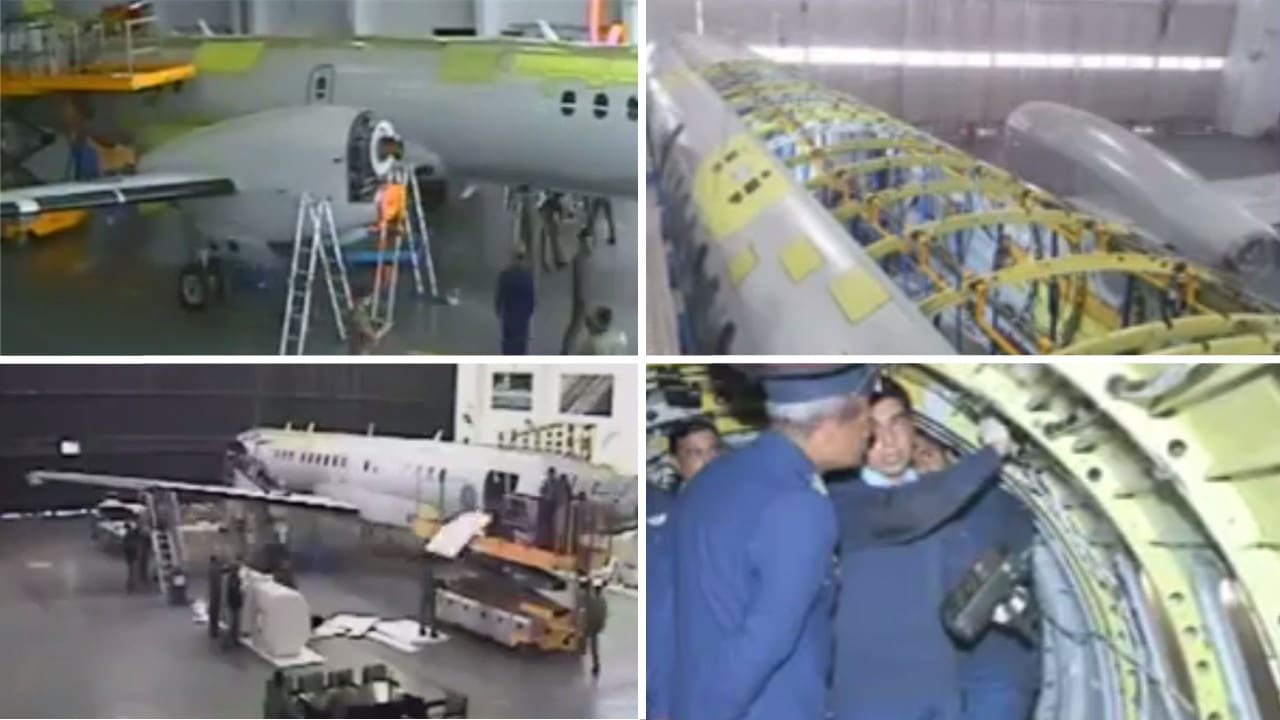
Recalling the condition of the two damaged Erieye AEW&C, Air Commodore Riaz stated, “The aircraft were very badly damaged. There was fire damage to the top of the aircraft, there were bullet holes.” Riaz added, “When we first looked at the aircraft, they looked like complete write-offs, as the company [Saab] said.”
Air Commodore Safdar added that not only was the airframe damaged, but “there was significant damage to wiring and significant damage to systems.” Safdar outlined that Saab’s assessment was not based on just visual inspection, but from its own damage assessment, stating, “[Saab] said that the extent of damage is so huge, the magnitude of damage is so vast, it would be very difficult to repair these aircraft.”
The PAF entrusted Safdar to carry out its own damage assessment of the two aircraft. Upon the study’s completion, Air Commodore Safdar had presented the results to Saab, after which Saab recategorized the aircraft as being repairable and supported the PAF’s proposed repair scheme. Safdar noted, “However, once we discussed with them and we gave our proposals of the whole plan which we made … they were … very open minded.” The PAF raised two teams: a structure repair team and a systems recovery team. The structure repair team, also comprising of PAF engineers, provided a theoretical model for the repair work, which was then implemented by an engineering team led by Wing Commander Muhammad Rafiq.
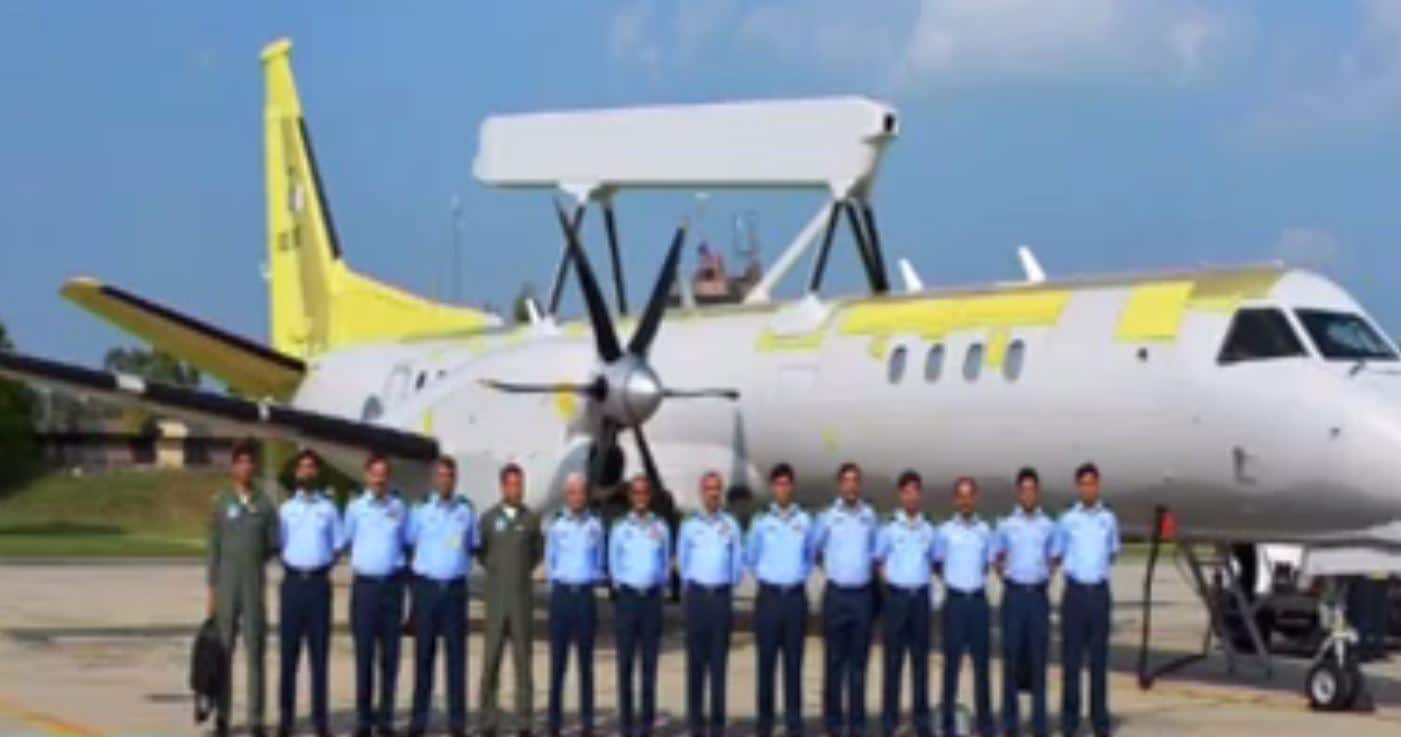
Air Commodore Riaz’s aerodynamics and certification team was responsible for ensuring that the repair work was in accordance to international standards. Riaz noted that besides being able to certify the repair work on the Erieye AEW&C, the initiative allowed the PAF to gain “the capability of being able to certify any military aircraft, another capability we gained out of this incident.” In fact, Riaz added that although Saab had permitted the PAF to recover the aircraft, the company did not intend to endorse the aircraft or repair work. However, upon assessing the PAF’s design work, implementation process and certification requirements, Saab “accepted [the two aircraft] back into their registry, in a way putting their stamp of approval.” To achieve this feat the PAF both embraced existing international standards and, where none were in place for tasks, define original ones to assess and certify the repair work.
Besides in-house repair planning and implementation work, some components were also sourced locally. Air Commodore Safdar stated that the new wiring was made at PAC’s Aircraft Rebuild Factory. PAC also carried out repair and testing of several the Erieye’s components. The trio noted that it was an integrated effort, one drawing upon the PAF and PAC. Wing Commander Rafiq stated that the implementation phase was difficult, but on the back of the effort the PAF and PAC had undergone significant capacity building. Air Commodore Safdar stated, “The capability which we have achieved during this recovery … was beyond expectations … [PAC’s factories] achieved things which were beyond their original capacity.”
Upon completion of the repair work, the PAF CAS Air Chief Marshal (ACM) Sohail Aman flew on the very first test-sortie of the newly repaired aircraft. The first aircraft was repaired in two years, while the second was completed in one year following the first. Air Commodore Safdar stated that the cost of repairing the two aircraft was 5% of the original value, echoing an earlier statement by ACM Sohail Aman (when he said the cost of repairing the aircraft was $25 million U.S.) Safdar reiterated that Saab’s endorsement was a significant step, stating, “…the execution, if that is not done right, the aircraft flight safety and aircraft life is in serious jeopardy.” Safdar lauded Wing Commander Rafiq’s role in this regard.
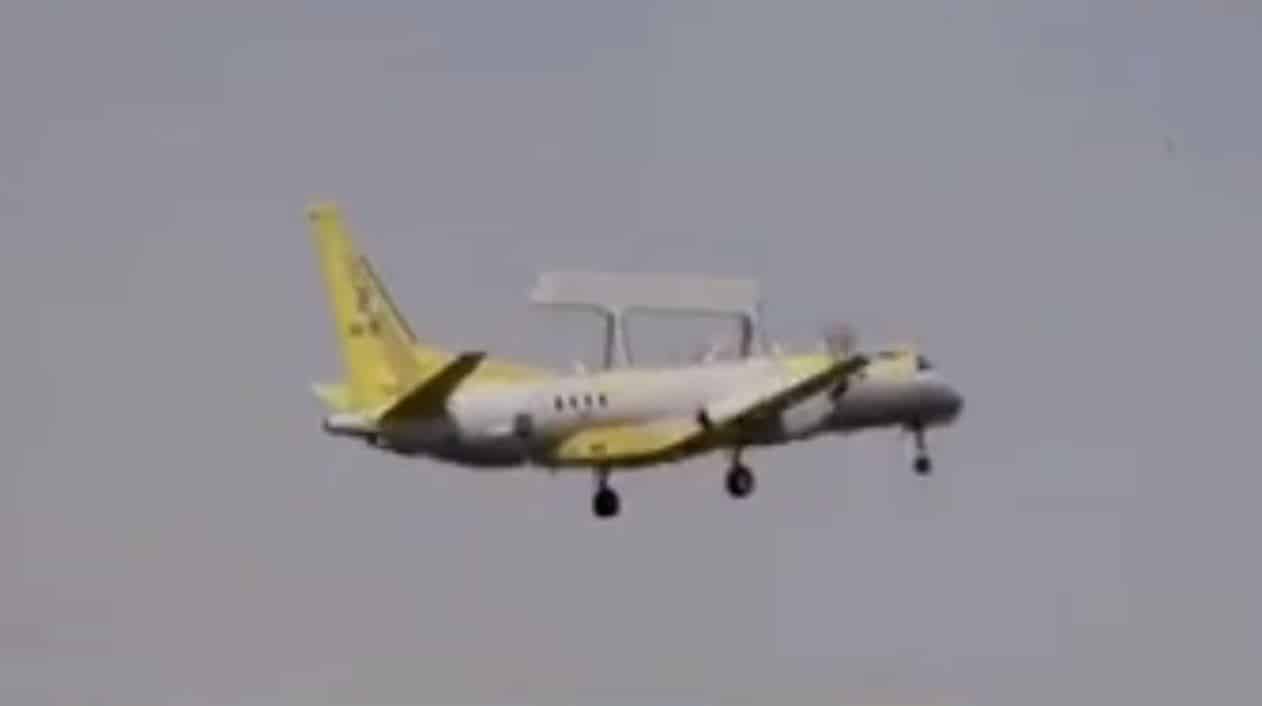
The initiative also demonstrated to Air Headquarters (AHQ) that the PAF’s engineering capacity was being underutilized and that it could be steered towards assuming greater responsibility in complex areas, such as design. According to Air Commodore Riaz, “The [CAS] decided to set-up the first multi-disciplinary design centre in Kamra, the first of its kind in Pakistan, which has now been operating for about two years.” Riaz also touched upon the inauguration of Kamra Aviation City, which will serve the central role in the design and development of a 5th-generation fighter for the PAF.
Notes & Comments:
It appears that PAC accrued a significant enough understanding of the Saab 2000 and material capacity to serve as a depot-level maintenance, repair and overhaul (MRO) site. Footage of the repaired Erieye show that significant portions of the airframe had to be replaced and, in turn, tested. With the PAF adding more Erieye AEW&C, D-level MRO at PAC would be natural seeing that the Saab 2000 is a long-term factor.
This would also be PAC’s first foray into civilian and commuter-transport platforms. In due time, PAC will also be equipped with a Damage Tolerance Analysis and Structural Health Management System acquired from Critical Materials S.A. in Portugal. This will help the PAF and PAC to closely monitor airframe health and improve maintenance processes to ensure higher availability and to preserve airframe life. However, it is not known if PAC will venture into civil aircraft manufacturing. While the Kamra Aviation City envisages such activity, the intent may be to spur private investment in aircraft manufacturing.

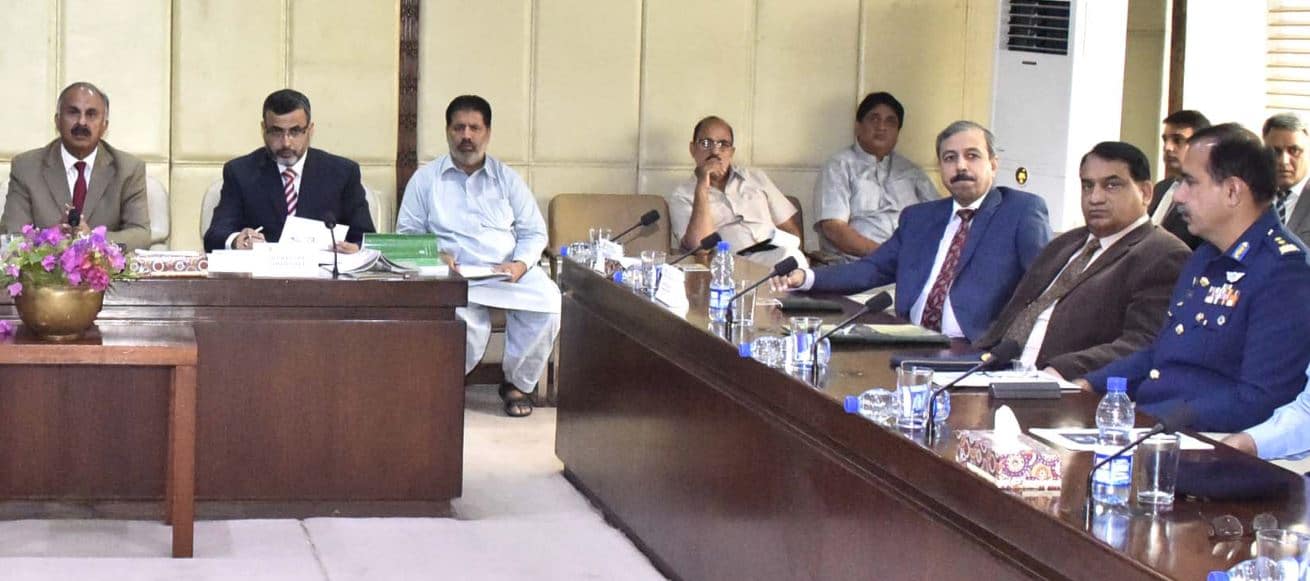
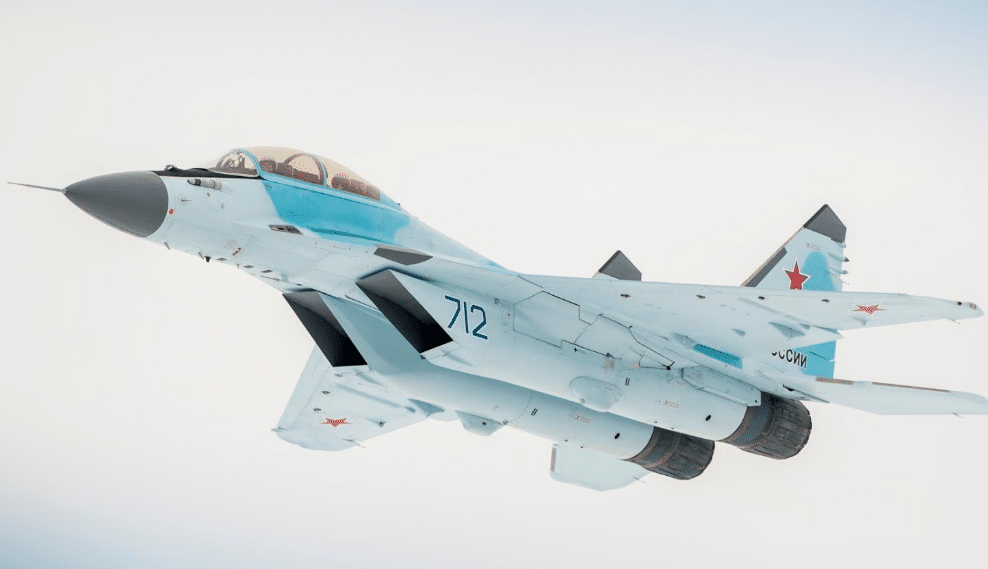
22 Comments
by Ronny Abbasi
amazing!
by Naveed AHMAD أحمد
The three officers and their respective teams must be decorated for this marvelous feat of engineering and national service.
by Asif Iqbal
Question is was the radar damaged ? If so who repaired the radar ? As far as aircraft is concerned that seems fine real test would be radar work ?
by Bilal Khan
Radar would always require Saab. It’s not just an issue of capacity, even that were in place Pakistan can’t do much about IP, proprietary technologies (and how to handle them), etc.
by Salman Naveed
Bilal, can you please provide the link to this interview?
by Bilal Khan
https://www.youtube.com/watch?v=dFGkxQWFPKY
by ali amanat
Absolutely right.
by sami shahid
Though it was a horrible & sad incident but after reading this article I really feel comfortable for that our PAF & PAC engineers have accomplished almost “mission impossible”. Now PAC & PAF should jointly develop a civilian aircraft so that it can be equipped with Radar and other equipment for surveillance & early warning. PAF & PAC should also buy sensors from Turkish Aselsan to secure our expensive & most important weapons. I won’t say much about that attack because it might not be appropriate to mention here.
by Ashwin
It is a good time to upgrade the sensor package to saab’s new GAN.
by Warrior
Hi Bilal,
PAF signed a USD 170 million contract with Saab in 2013 concerning “a comprehensive set of spares and support services”. And yet, PAF officials are trumpeting that PAC managed to repair the two aircraft at a cost of just USD 25 million (the OEM’s estimate was USD 287 million).
https://www.flightglobal.com/news/articles/saab-2000-aew-customer-signs-five-year-support-deal-383742/
by Salman Naveed
Much obliged. Thank you very much.
by Bilal Khan
At the time KSA was also a Erieye operator, so analysts had to deduce between it and Pakistan. We also don’t have any registries in the MoDP report concerning such equipment.
by Rehan
Hi Bilal,
Is it possible for Pakistan to ask SAAB to allow Pakistan to build and operate attested services and repair center for SAAB Erieye AEW&C for Asian customers. In view of a commended and marvelous job PAF done, which SAAB acknowledge as well..
by TZK
Concerning the incident was there an investigation and was anything done to prevent this? Protection of assets in peace time is a primary function of any responsible govt but Pakistan is suffering from terrorism so they have to double their efforts. I just hope their nuclear sites are better protected from both air and ground attack?
by Shakeel
A big thank you to Bilal for presenting this excellent analysis to us.
Just like to add that ACM Sohail Aman is an exemplary leader. He leads by example & can be described as the ‘Real McCoy’. Word’s alone cannot describe what an incredible individual he is. A great visionary of PAF.
Also it is heartening to hear the like’s of Air Commodore Safdar & Riaz give such an upbeat assesment, that I cannot hold back my inner self. ‘Jeevay Pakistan’ & keep up the good work.
by Aamir
One always learns the most, when one is faced with adversity. Over the years the has been shown time and again by the boys in blue. Some examples are below:
1 at the time of partition when the IAF damaged aircraft engines of those aircraft that were allocated to Pakistan these aircraft were repaired and the nursed back to Pakistan.
2 when Project ROSE was planned and then implemented.
3 The repair and recovery of these damaged Erieye aircraft.
by Shaukat
Don’t worry everything is in safe hands
by TZK
If I got a sweet every time someone said ‘its in safe hands’ then I would have diabetes now. There is also a history as Amir pointed out of sabotage. Without any facts one has to assume that the OBL raid was ‘genuine’. It is also not difficult to understand why an adversary would want to disable early warning planes. High value items such as nuclear sites would probably be protected but these are dangerous times for Pak and they need to be extra vigilant.
by Faisal
I remember one of the previous PAF chief had expressed disappointment that we assemble things and dont have domestic market to carry out proper ToT. Good know 10 years later , we are in much better shape. If these repaired SAAB are able to serve like normal planes and live their normal life then it would be a great success indeed. I am not radar expert but I do know AESA based SAAB is much better than PETA based Chinese AWACS. PAF was not interested in buying them but Musharraf made decision to please Chinese.
Pakistan has talented engineers , they should work towards building things locally.
by Faisal
Right SAAB is just an aircraft. You can repair that but not the radar and avionics. Looks like avionics was still operational OR they probably bought the damaged parts from SAAB. I thought a typical AWACS would cost 100 Million a piece. Here it looks like we are getting 3 for 130 Million.
by jamshed_kharian_pak
Great always great & Powerful Islamic Republic Of Pakistan Zindabad
by Steve
I don’t think there was an open investigation. Maybe an internal one not publicised. So much for the story of all three recovered. Everyone knew one was a write off. The only bright spot in this sorry saga is that PAC gained repair experience. All you need is a few vigilant men with guns on watch towers to kill TTP thugs if they approach the perimeter fence. Force protection is not difficult but the airforce was left with egg on its face, as was the navy with it’s Orion fiasco. We should do better in protecting prized assets. I think Norway is retiring 6 Orions soon and there is a possibility of picking up some more aircraft. Hope the new Erieyes are the Globaleye iteration.